Where to savour Rome's hidden Jewish food
 Maurizio Fiorino
Maurizio FiorinoChef Ruben Bondì knows that Rome's Jewish restaurants serve some of the best food in the city. Here are his picks in the historic Jewish quarter.
In 2025, millions of pilgrims and tourists are flocking to Rome and the Vatican City, the historic seat of the Catholic Church, in honour of the Jubilee year. But less than a mile from St Peter's Basilica, Europe's oldest Jewish community is thriving – and continuing a rich culinary tradition dating back to when Jews first settled in Rome in the 2nd Century BCE.
For Ruben Bondì, an influencer chef and member of the city's Jewish community, the tradizione giudaico-romanesca (Judaeo-Roman tradition) is not just a subset of Roman cuisine; it's one of its cornerstones.
"Jewish cuisine is the true Roman cuisine," says Bondì, famed for filming his cooking videos on his balcony in Rome's Monteverde neighbourhood. "Our food is very poor and simple. But it's incredibly flavourful."
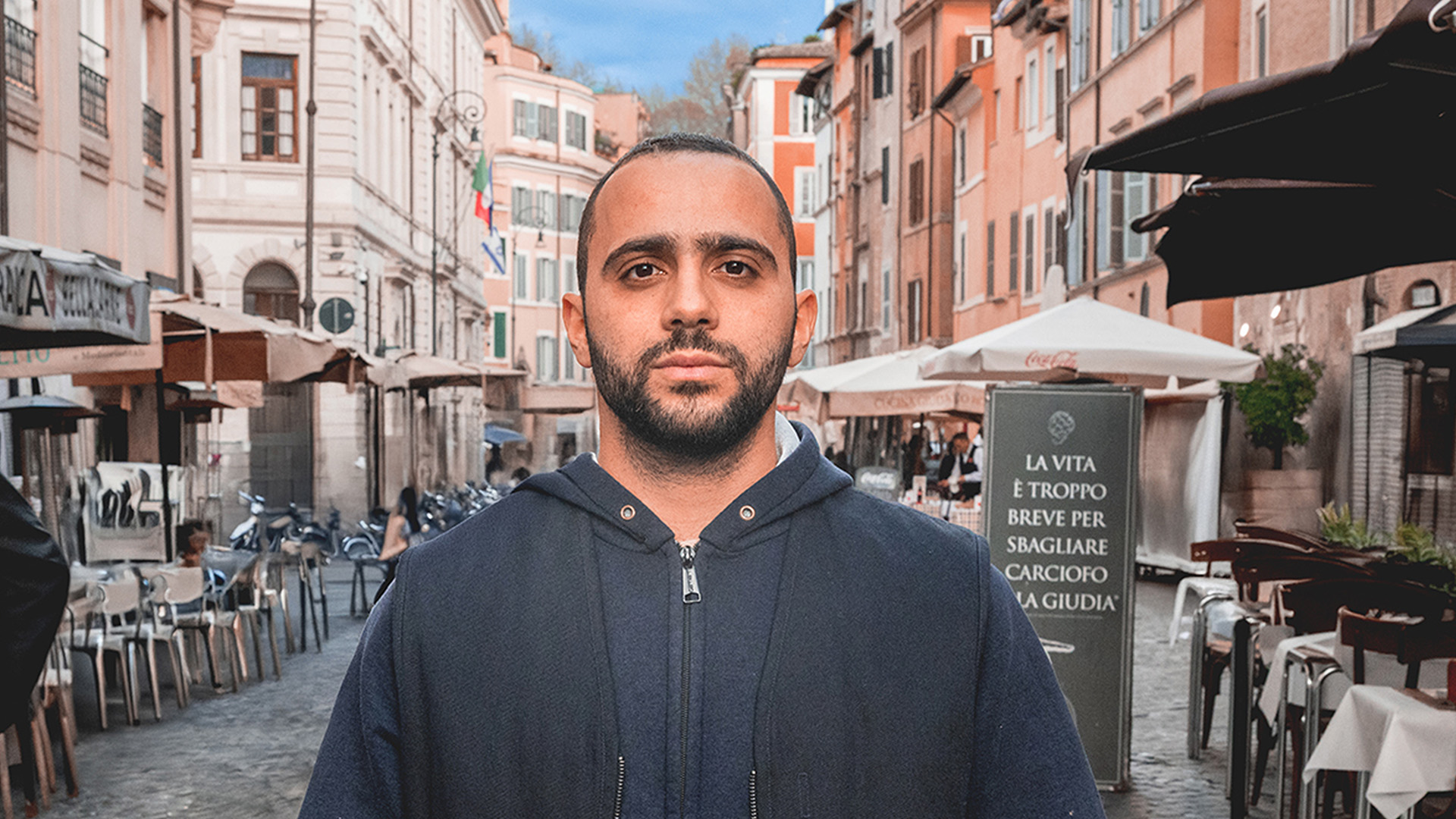
The SpeciaList
(Credit: Maurizio Fiorino)
Ruben Bondì is a Roman chef and food influencer whose cooking videos have earned him more than four million followers on social media. In 2023, he published a cookbook on Jewish Roman cuisine, Cucina con Ruben.
Developed over the centuries and influenced by waves of Sephardic migration when Jews were exiled from Spain and Portugal over the 15th and 16th Centuries, Roman Jewish dishes are often fried and typically feature almonds, artichokes, sour cherries, cod and preserved fish. Among these are some of the Eternal City's most beloved recipes – expressly kosher yet iconic throughout largely Catholic Italy – from carciofi alla giudia (fried artichokes) to stracotto (braised pot roast). Today, they can be savoured in the string of Roman Jewish restaurants clustered near the southern banks of the Tiber River, in what was once the city's Jewish ghetto.
"Every family has their own recipe, their own way of making a dish," Bondì says. "Food is a strong presence in my home. Every Friday, before Shabbat, my grandmother would prepare the same thing – typical [Jewish] dishes like concia di zucchine [marinated fried courgettes] and abbacchio [roasted lamb] with potatoes."
But behind the delicious recipes and family traditions is a tragic history. As a target of persecution throughout history – from 1st Century CE purges by Roman emperors Tiberius and Claudius to almost three centuries of ghetto confinement under Papal rule from 1555 to 1815 – Roman Jewish identity was forged in response to oppression, and its food is no exception.
"In the ghetto, Jews were forbidden from trading, and this influenced many of our dishes," Bondì says. "Like how ricotta cheese is hidden in our tarts [so] the Pope's Guards wouldn't notice. Or our famous fish soup [brodo di pesce] made of sardines, was because we weren't allowed to buy prized fish, only anchovies and sardines."
Today, Rome's former ghetto – sandwiched between heavily touristed landmarks like the Roman Forum and Campo de' Fiori marketplace – is a picturesque, lively Jewish quarter of meandering cobblestone alleyways, bakeries and restaurants, but it still emanates the joy and pain of its roots.
Here are Bondì's top ways to savour Rome's hidden Jewish soul.
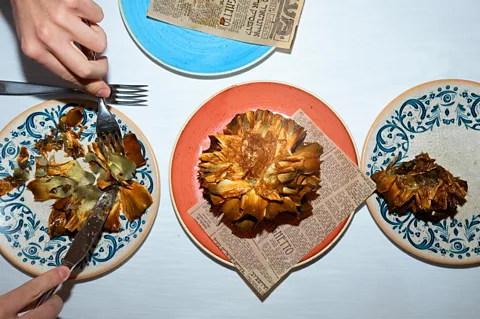 Maurizio Fiorino
Maurizio Fiorino1. Best for a quintessential Jewish Roman experience: Ba'Ghetto
Located at the Jewish quarter's heart, near the Tempio Maggiore synagogue and Porticus Octaviae – the 1st-Century BCE ruins of an ancient Roman portico that eventually became a fish market, and the neighbourhood's symbol – Ba'Ghetto is just about as quintessentially Judaeo-Roman as it gets... with a twist.
Don't get your artichokes off-season
While artichokes may be the undeniable star of the Roman Jewish kitchen, Bondì recommends visitors only consume the vegetable when it's in harvest. "Avoid getting artichokes when they're off-season," he advises. "You won't be served Italian artichokes, and they won't be as fresh. You should only get them when it's artichoke season, so from November-December to May."
"They do a mix of cuisines, a bit of everything," Bondì says. "Jewish Roman, of course, but also Middle Eastern and Arab Israeli food."
Among its Roman Jewish staples is carciofi alla giudia – a delicacy that balances both freshness and fried heartiness.
The restaurant's menu features Middle Eastern and North African Mizrahi dishes, like hummus, falafel, couscous, Tunisian binik, tabbouleh, lahmacun, kebab and baklava, as well as kosher takes on pork-based Roman pasta recipes like spaghetti alla carbonara and bucatini all'amatriciana, made with dried beef.
"Their aim is to unite these [foreign] cuisines with the Jewish Roman tradition," Bondì says.
Ba'Ghetto, which opened in 2007 and abides by strict kosher rules, now has branches in Venice, Florence and Milan. Its main restaurant – a chic, minimalist eatery covered in Hebrew inscriptions and black-and-white pictures – does not serve any milk-based products, preparing its desserts with vegan alternatives. For dairy delicacies and desserts, you can try the nearby Ba'Ghetto Milky.
Website: https://www.baghetto.com
Address: Via del Portico D'Ottavia, 57, 00186 / Via del Portico D'Ottavia 2/A (Ba'Ghetto Milky)Phone: +39 06 9674 0389 / 06 6830 0077 (Ba'Ghetto Milky)
Instagram: @baghettorestaurants/
 Maurizio Fiorino
Maurizio Fiorino2. Best on the go: Rosetteria Renato al Ghetto
Roman food is simple and unfussy by nature and its Jewish variant is no exception; often best savoured on the go.
So when local institution Renato al Ghetto – where Bondì worked as a waiter in his younger days – realised it could replicate its success with street food, its hole-in-the-wall "Rosetteria" was opened, serving the best of the Roman Jewish tradition in a bun.
"Rosette are a type of Roman bap," Bondì says, referring to the popular rosebud-shaped bread with a distinctively crusty exterior and soft, fluffy heart; the perfect vehicle for hearty sandwich fillings. "I'd recommend beef stracotto or Roman artichokes."
Among the other sandwich topping options at the takeout spot, squeezed between the neighbourhood's multitude of restaurants, are the tomato-braised chicken alla cacciatora, beef jerky, lemon escalope and even a sweet soy chocolate variant, all of which come in under €12 (£10).
"It's very good," Bondì says. "I advise it for anyone who wants a quick meal."
Address: Via di S. Maria del Pianto, 63, 00186
Phone: +39 338 859 3395
Instagram: @rosetteria_renato_al_ghetto
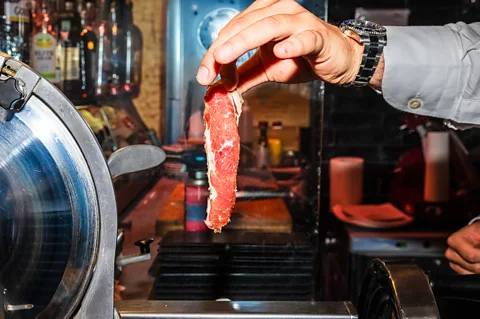 Maurizio Fiorino
Maurizio Fiorino3. Best for meat dishes: BellaCarne
"Meat is a strong part of our culinary tradition," Ruben says. "And for meat lovers, I recommend BellaCarne."
Located a mere block from the ruins of the Porticus Octaviae, the restaurant's name itself is particularly promising – translating literally to "Beautiful Meat" – and its dishes definitely live up to expectations.
"I can especially vouch for their grilled meats," Bondì says, which include scottadito lamb and veal chops.
But while meat in all its forms – roast, fried, stewed and braised – is the undeniable star, it isn't the only thing worth ordering.
"They have an excellent vegan crostata [tart] for dessert," Bondì says, made with almond paste and sour cherries.
Roman Jewish food may be humble by nature, but BellaCarne offers a decidedly refined dining experience, set in a chic, wood-panelled interior. As with other restaurants in the area, BellaCarne has also dedicated itself to street food, and you can find take-out options and lunchboxes at their grab-and-go spot, BellaCarne Street Food.
Website:
Address: Via del Portico d'Ottavia, 51, 00186
Phone: +39 06 683 3104
Instagram:
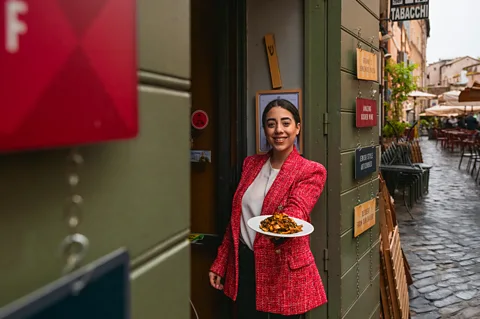 Maurizio Fiorino
Maurizio Fiorino4. Best for home cooking: Casalino Osteria Kosher
The dishes of Roman cuisine are famous throughout Italy for being hearty and expressly casereccio – homestyle, homemade.
Casalino, whose name evokes the warmth of the Italian lunch table, promises a cosy dining experience, and its oak floorings and earthy colours create an inviting ambiance.
"It's hearty, homey Jewish Roman food," Bondì says.
The restaurant was opened by the Zarfati family in 2021, after the opening of their successful Dolce Kosher bakery, and follows the recipes of the household matriarch, nonna Letizia.
Among its dishes are distinctive spins on local classics, such as salt-cured cod with tomatoes, pine nuts and raisins; butter and truffle tonnarelli pasta; and the must-have carciofi alla giudia. Bondì emphatically recommends Casalino's roasts, but notes that the Zarfati family tightly guards the recipe.
"It's a secret," he says.
Website: https://casalinoosteriakosher.it
Address: Via del Portico d'Ottavia, 1e, 00186
Phone number: +39 06 7978 1514
Instagram: @casalino.osteriakosher/
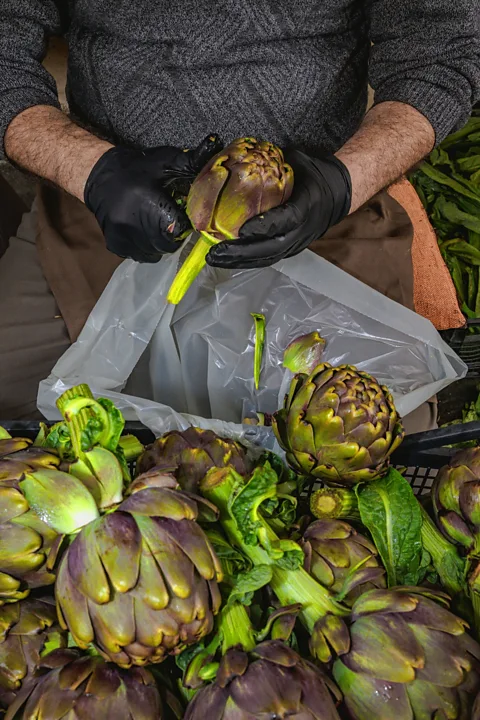 Maurizio Fiorino
Maurizio Fiorino5. Best for non-kosher, plant-forward dishes: Il Giardino Romano
While most of the quarter's restaurants follow kosher food rules (including forbidding pork and the preparation of meat and dairy products together), Il Giardino Romano has adapted the Roman Jewish culinary tradition for a secular palate.
"It's the only Roman Jewish restaurant that isn't kosher," Bondì says.
As its name suggests, Il Giardino Romano ("The Roman Garden") has a green thumb – its menu focuses heavily on vegetables, from chicory and courgettes to artichokes, which Bondì calls the restaurant's speciality.
The mighty artichoke is a recurring character in many of the restaurant's takes on traditional Italian and Roman Jewish dishes that don't typically warrant its use – from fettuccine alle vongole (pasta with clams) to cacio e pepe to even more idiosyncratic pairings.
"[Il Giardino Romano] has a particularly unique dessert," Bondì says. "A ricotta crostata with artichoke."
And if the menu does not succeed in evoking the bucolic delights of the Roman orchard, its setting certainly will – the restaurant has a small brick courtyard covered in trees and hanging ivy.
Website:https://www.ilgiardinoromano.com
Address: Via del Portico d'Ottavia 18, 00186
Phone: +39 06 6880 9661
Instagram: @ristorante_il_giardino_romano/
BBC Travel's The SpeciaList is a series of guides to popular and emerging destinations around the world, as seen through the eyes of local experts and tastemakers.
--
If you liked this story, sign up for The Essential List newsletter – a handpicked selection of features, videos and can't-miss news, delivered to your inbox twice a week.
